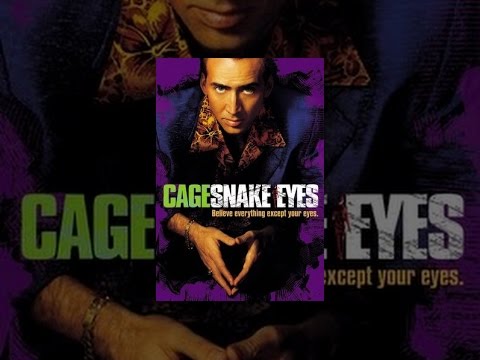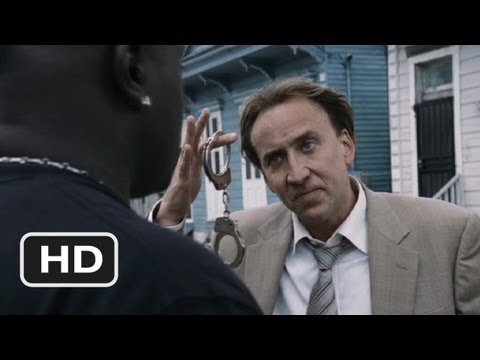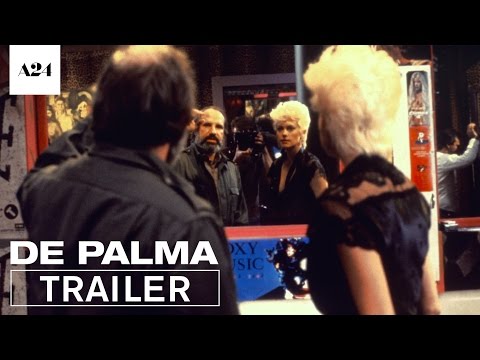Brian De Palma’s “Snake Eyes” stars Nicolas Cage as the brash, corrupt Detective Rick Santoro, who attends a high-profile boxing match in Atlantic City.
While a massive storm looms outside, the attendees embrace the decadence just outside the ring – politicians, patrons, security guards, quasi-celebrities and sleazy locals like Santoro are everywhere.

Following an intro with an irritated news reporter having to do an outside weather report, we get to the main event.
It’s not just the fight.
De Palma’s incredible one-take intro to Santoro and his sleazy existence shows us arounds corridors, up and down escalators down to ringside. It’s dialog-heavy, incredibly complicated in its staging and so exciting to watch.
One of Santoro’s best friends, Commander Kevin Dunne (Gary Sinise) sits alongside him on ringside seats. When a shot rings out and a powerful figure sitting near Santoro is now dead, the event erupts into anarchy.
Santoro and Dunne immediately sweep the area and round up the suspects. Who took the shot, why did they do it and is there one person responsible for the public assassination? How do you solve a murder that takes place in plain sight with “14,000 eyewitnesses?”
Because it’s De Palma, the expected Hitchcock visuals and themes are present. However, even with those aspects in place, there are more neo-noir themes on hand, as well as De Palma doing Robert Altman taking on “Rashomon.”
There’s a McGuffin about Air Guard Missile Tests but the core of the film is Santoro’s belatedly finding a moral center in a corrupt world.
De Palma is once again exploring media manipulation and distraction through large-scale diversion. It could be interpreted as political satire as just flat out American social commentary.
RELATED: ‘MANDY’ DELIVERS NICOLAS CAGE AT HIS UNHINGED BEST
De Palma is dipping his toe into the “Blow Out” (1981) pool once more. “Snake Eyes” is a smaller film than De Palma’s anti-commercial, challenging tour de force of the original “Mission: Impossible” (1996) but still made with a bravado showmanship to match the work of his leading man.
“Snake Eyes” isn’t an action movie but a thrillingly staged mystery, which made it an odd attraction during the summer of 1998. Coming off of his back-to-back blockbusters of “Con Air” and “Face/Off” and the surprise hit of “City of Angels” earlier in the year, Cage was on a roll that lasted for years.
NICOLAS CAGE celebrates his 59th birthday today. An Oscar winner who has been in the industry for over 40 years, here he is in the impressive one shot opening to De Palma’s SNAKE EYES (1998). pic.twitter.com/V422hd7gfs
— All The Right Movies (@ATRightMovies) January 7, 2023
Playing Santoro, Cage is on fire from his first entrance. The character simmers down as the discoveries of the investigation become increasingly grave. Cage is not being over the top but playing a brash, inhibition-free jerk whose lack of a moral center changes drastically in a single evening.
There is no convincing naysayers who loathe any period of Cage’s work, whether it’s his early post-“Peggy Sue” choices, his commercial breakthrough after winning the Oscar, or the on-again-off-again era of wild creative peaks and valleys he’s currently in.
Cage always takes big swings and is rarely (if ever) accused of being subtle.
RELATED: 19 PERFECT ‘RAISING ARIZONA’ QUOTES
Nevertheless, the actor’s willingness to give nearly every project he takes on an above and beyond approach, giving it his all when the movie itself may not need or deserve it, has made him one of my favorites.
Alongside his incredible turn in Werner Herzog’s off-the-wall “Bad Lieutenant: Port of Call New Orleans” (2009), this is my favorite of his “big” performances.

In both cases, the initial bravado of the characters masks the moral rot beneath, as both characters find a form of redemption but, in the end, haven’t entirely reformed their wicked ways.
The shot of a bloodied bill and the final, painful look Santoro gives it, says everything about the character and how far he’s come. It’s the film’s most important shot and solidifies the film’s neo-noir identity.
Stan Shaw impresses with his moments of outward anguish as “The Atlantic City Executioner,” the boxer whose decision to sell out guts him. There’s also standout work from Sinise, John Heard and Chip Zien, who cult movie fanatics should recognize immediately as the voice of “Howard the Duck” (1986).
Best of all in supporting ranks is Carla Gugino, in one of her first major dramatic roles, impressively holding her own with Cage during one of the film’s best scenes. There’s also the weird synergy of Sinise playing a character named Kevin Dunne, while character actor Kevin Dunn is also in the cast.
RELATED: SINISE MAKES IT AN EVEN 100 USO TOURS
“Snake Eyes” begins with a raging storm that only grows over the course of the story. Originally, the storm was a vital element to the film’s narrative build: before its release, reports surfaced that the film once had an even wilder climax, in which a tidal wave smashes its way through the venue and acts as the Hand of God.
Apparently, test audiences were, for some reason, put off by the CGI and practical effects supplied by Industrial Light & Magic.
One of the joys of “De Palma,” the wonderful 2015 documentary from Noah Baumbach and Jake Paltrow, is that, in addition to getting great soundbites from their subject, De Palma unveils the original, unused ending of “Snake Eyes.”

Seeing it now is yet another confirmation that the test screening process often cripples good movies.
The imagery that originally gave the film its climax is awesome – why did the studio allow a know-nothing test screening audience to dictate its deletion? The retooled finale, as it stands, is limp, with actors standing around, pointing guns and making accusations.
The closing third act of the theatrical cut doesn’t ruin the film but it’s an anticlimax and, now that the footage is out there, a real step down from the gripping spectacle that once properly concluded “Snake Eyes.”
A director’s cut will hopefully show itself one day.
While the finale has been muted by a poor decision at the corporate level, “Snake Eyes” is a real sleeper in De Palma’s body of work. Like his later career works, “Raising Cain” (1992), “Carlito’s Way” (1993) and “Femme Fatale” (2002), it was heavily criticized for being warmed-over material from prior De Palma works.
While the filmmaker is certainly returning to themes that marked his earlier classics, this riveting, cleverly staged and enormously entertaining genre workout brings out the best in De Palma and Cage.
Perhaps this is simply an “exercise” in suspense and not an all-out classic. “Snake Eyes” carries a status as a second-tier De Palma film but, considering how brilliantly produced, well written (the screenplay is by David Koepp) and dynamic this is, it makes me wish more lavish B-crime movies were this good.
The post Why ‘Snake Eyes’ Brings Out the Best in Nicolas Cage, Brian De Palma appeared first on Hollywood in Toto.
0 Comments